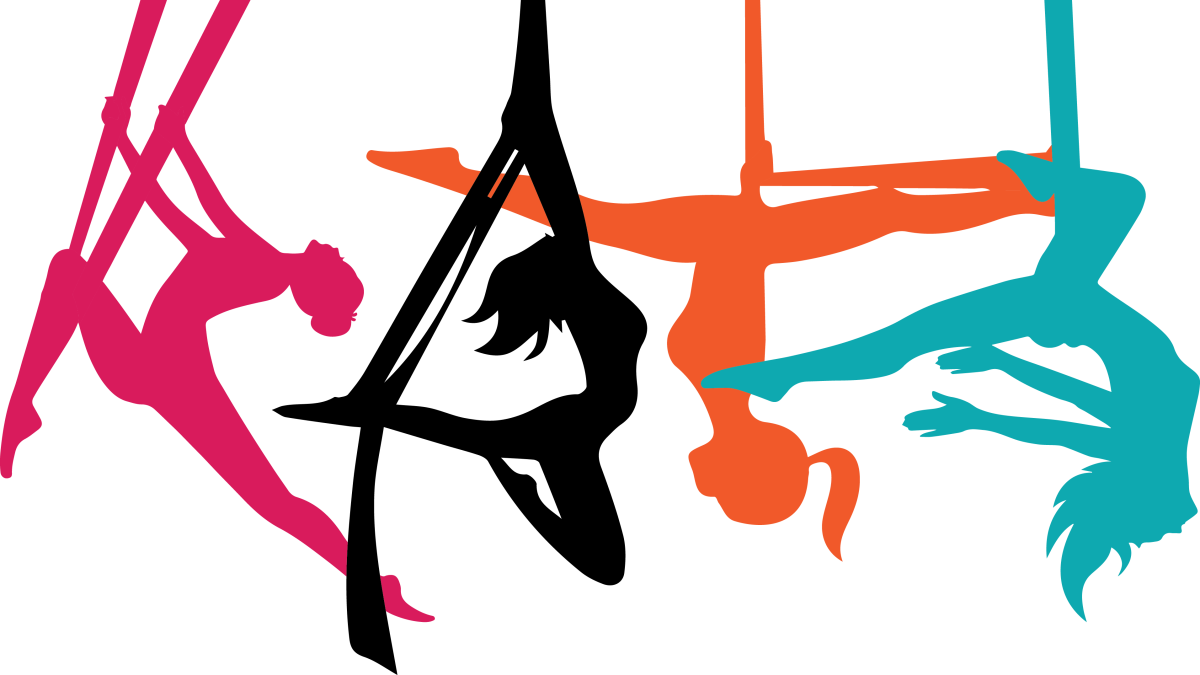A novice explores a re-emerging trend
What do you get when you combine the circus and yoga?
You get aerial yoga, a reemerging trend that has been around since the yoga boom in the 1970s. Think traditional yoga, but upside-down and two feet off the ground.
Kaya Aerial Yoga, located in Old City, is the only studio in Philadelphia dedicated to aerial yoga. It offers a range of classes, from boot camps to FlexFlow, all involving various intensities of core exercises and deep stretching. I had only tried yoga a couple of times in my life, and had recently skipped some gym sessions in lieu of homework, so I decided to pay the flat-rate fee of $20 for an introductory course.
One mid-February morning, I threw on a tank top and my “I can do anything” leggings, and ordered an Uber for the 90-minute class. Admittedly, my initial impression of the studio, despite the amazing website and sunny disposition for the day, was lacking due to its grungy exterior. But behind its hot pink door, Kaya Aerial Yoga Studio proved to be a diamond in the rough.
The jam-packed space was covered with colorful silks and sun-soaked chalk boards. The lobby was dense with mirrors, water bottles, and fun quotes. However, the only thing missing was a view of the exercise space itself, appropriately named “The Hammock Room,” which made the experience feel a little mysterious. What was hidden behind that closed door? Why was there muffled laughter every time the ceiling started to creak?
In the meantime, everyone I met, including the instructors, new students, and returning students, were all amicable. Alyssa Vaccaro, a nursing major at the University of Pennsylvania and returning aerial yoga student, was especially kind. She helped me find a cubby, reminded me to take off my socks, and offered encouraging words while we were waiting for class to begin.
Vaccaro also told me that she had practiced aerial yoga in Doylestown, Pa. for a while, but takes the introductory course at Kaya on Saturday mornings.
“I really like the stretches,” she said. “And I like how centered it makes me feel. I always feel a little bit better after I come here.”
Finally, it was time to enter the Hammock Room. I was greeted by rows of upside-down rainbows, empty walls, and a young, fit instructor.
The instructor turned out to be Alexandra Densmore, who taught our class for the day. Understanding that most of the students in the class were new to aerial yoga, she patiently explained the safety precautions of the studio in full detail. She reassured us that the circus-grade silks, daisy chains, and rock-climbing equipment shifting against each other was completely normal, and emphasized that we should “trust the fabric” as if the swings were steel-reinforced friends who earned a living doing trust falls.
Unlike yoga classes in the past, I found it very easy to follow Densmore’s instructions. The pace was slow, but everything was done with careful intention. She reminded us to focus on certain muscles when stretching and flexing, and cautioned the “flighty” bravados who were excelling in inversions. The terms “flighty” and “inversions” were typically used in regard to flipping upside-down in the hammocks. I wasn’t particularly brave when it came to inversions, but I aspired to become as comfortable as Vaccaro who had been twisting and turning before the class had even begun.
By the end of the session, I felt like I had paid $20 for an hour-long deep tissue massage. We had the final option of choosing between the Sleeping Bear Pose, or meditating in a hammock if we were too dizzy. Weirdly enough, I found myself contemplating a lot of childhood memories there, like how I practiced tricks on the tire swing back home, or how I used to twirl around on the swing set in elementary school. Later on I would find out that Carrie Ann Phelinczak, co-owner of Kaya Aerial Yoga and the studio director, would describe this childlike wonder as being one of the best aspects of the craft.
Leaving the class, I was absorbed by the mental version of the “rush” Densmore had told us about during our morning session: sore and shaky at first, but bursting with energy from exercising new parts of the body. This was quickly becoming one of my favorite parts of aerial yoga.
Densmore says her favorite part of aerial yoga is channeling people’s inner strength.
“I like people to mentally get to a point where their body is uncomfortable and realize they’re not dying, and that there’s room for growth,” Densmore said. “And they flip the switch to inner strength.”
I admitted that it was hard to flip the switch, but once you do, it’s very addicting.
“It’s so hard when you’re still there,” Densmore agreed with me. “Then you think ‘Okay, I’m not dead. I’m not dying. I’m not actually in pain. I’m just uncomfortable.’ Then they flip the switch and think, ‘Well, what if I keep going? And they get stronger.’”
As I stepped back out to the cobblestone alleyway, bright and cheery under the cloudless, blue sky, I couldn’t help but breathe a long sigh of relief. Densmore was right. In a weird way, I felt much stronger than I had before the class. Was I any closer to becoming a Cirque du Soleil performer? Hardly. But through enduring the trip to the studio (rush hour is quite the dragon) and braving the inversions, I still managed to make progress.
So while my muscles were shaking and my legs felt like jelly, my confidence was spurred. Thus I headed out into the depths of Old City to conquer the day, keeping these lessons in the back of my mind, and gently maintaining that “centeredness” while my feet took flight.















































